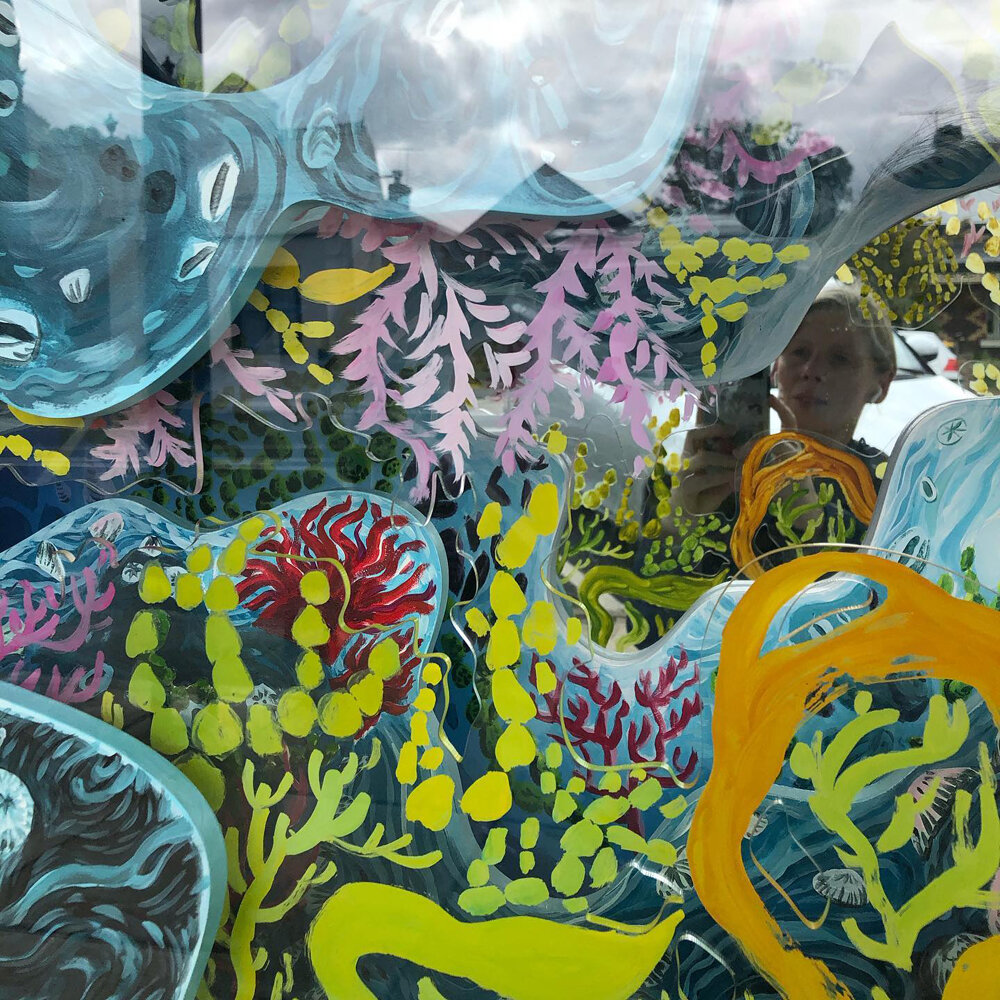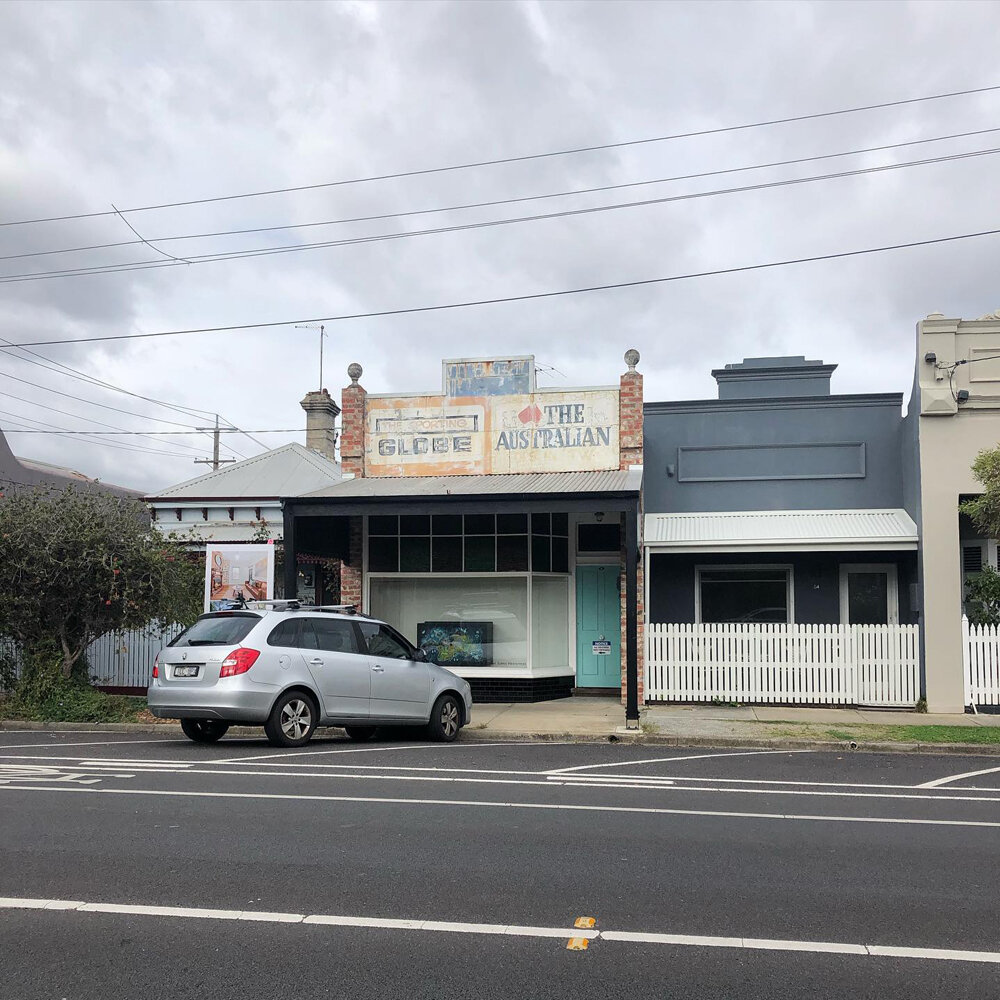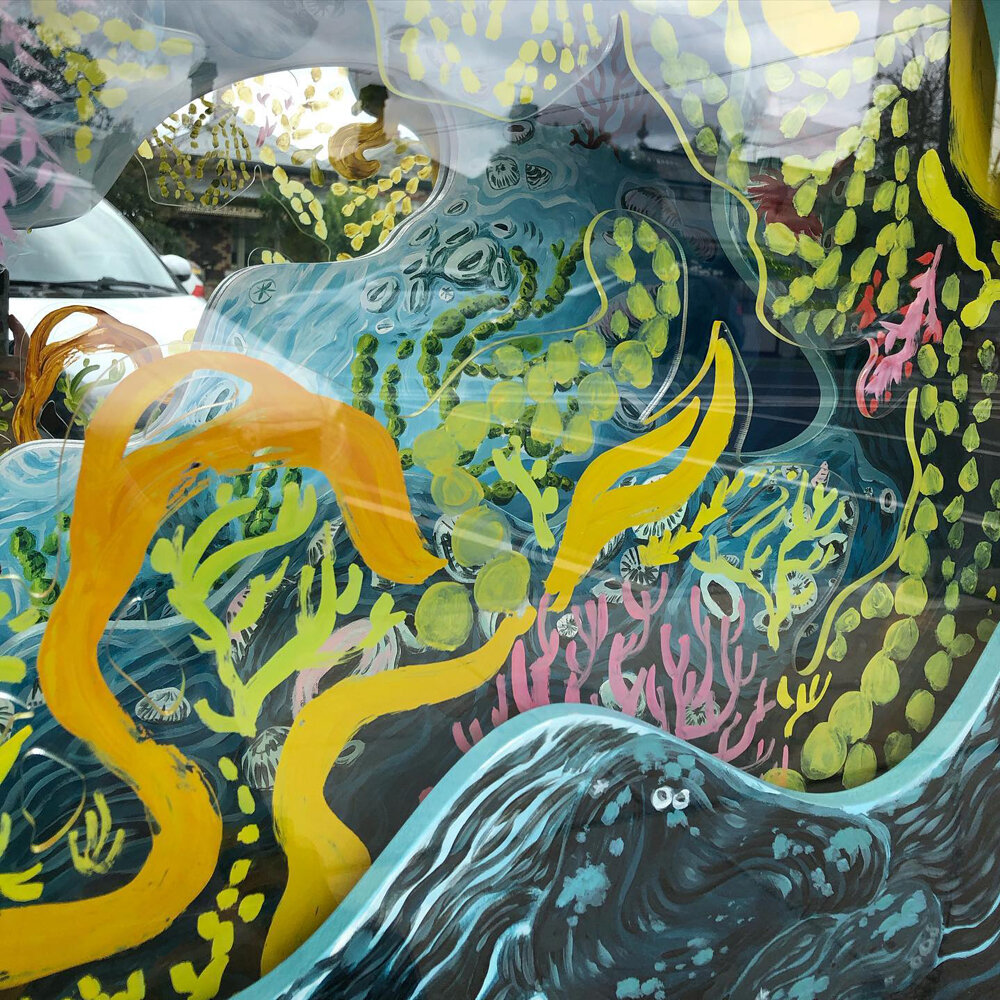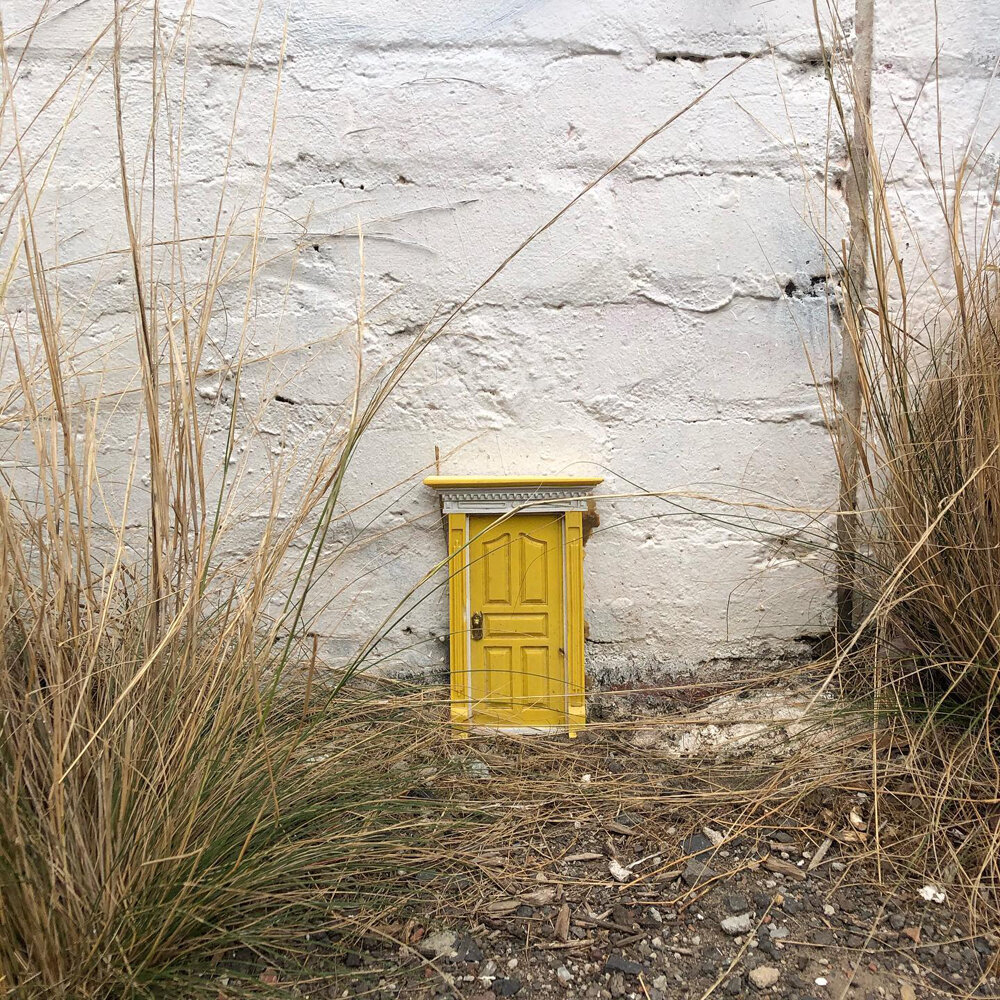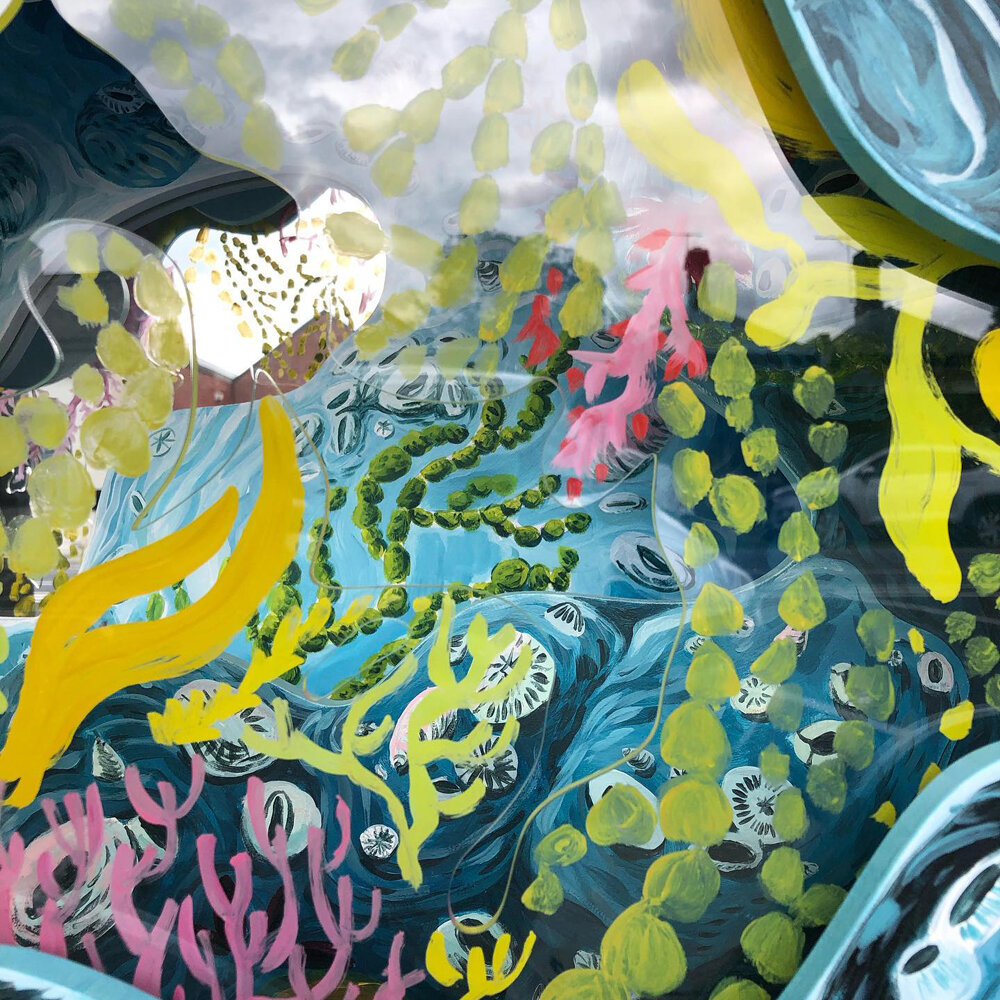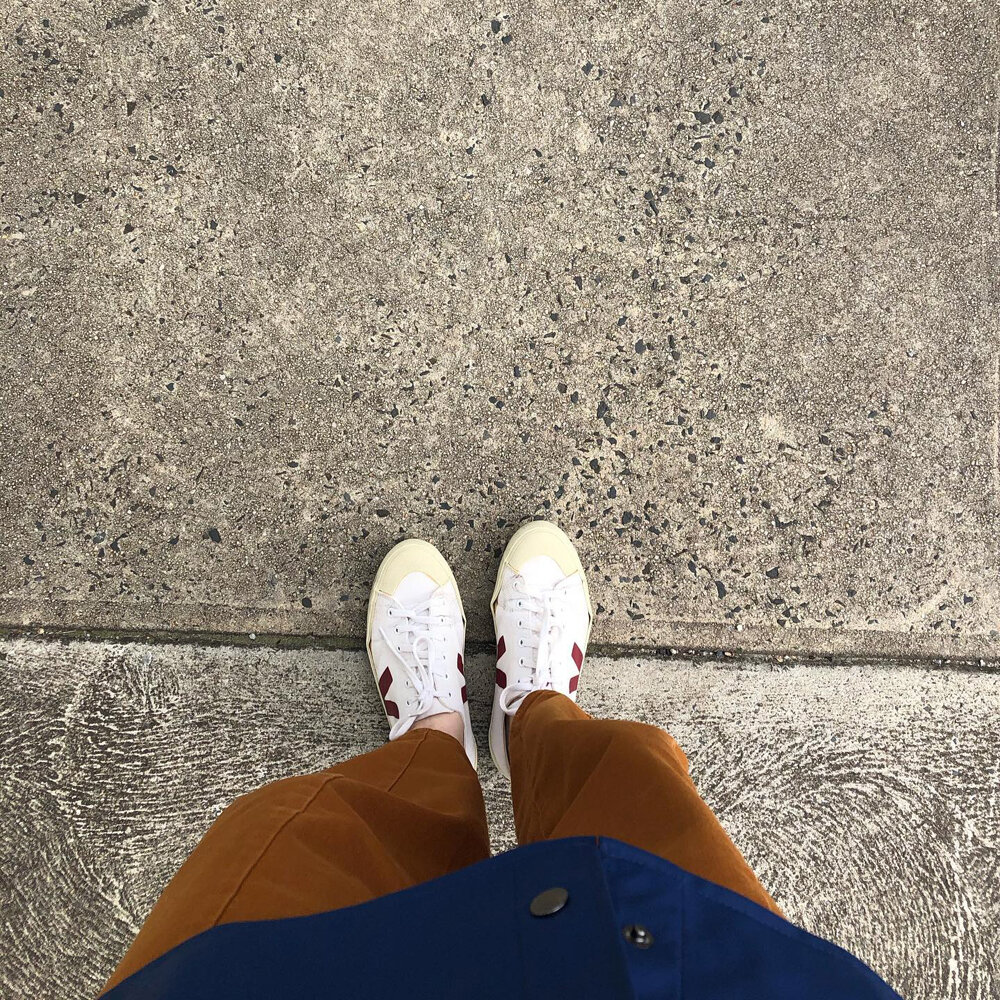“Marine still life”, anything but

Rockpool
Scarlet Sykes Hesterman
Sunday 18th April – Saturday 22nd May, 2021
Dot Space
56 Charles Street, Northcote
Field Notes, a catalogue essay in response to Rockpool, drawn up especially for Scarlet Sykes Hesterman, and Heather Hesterman and Sarah Tomasetti, Peradam Projects.
Through the park, and up the main road, across Merri Creek, confined, and a sign to a Rotary Club meet. On a domestic street, quiet, a former milk bar, now Dot Space, now a rockpool surrounded by man-made infrastructure. Beneath my feet, asphalt still.
Just as the frogs at Merri Creek cannot cross the main road in search of a mate, this rockpool is an isolated habitat true of the inner city. A pocket. The bits allowed, still holding on. The bits we can’t develop. The bits close to what was, before we interrupted with our road signs. Before we laid down our directional pathways that didn’t consider such things important. How does the endangered Growling grass frog[1] here meet the endangered Growling grass frog there? An arterial road to allow for traffic flow and speed has a different value system. Slice, make a grid, rollout the urban sprawl, flattening the ancient connections of nature’s web beneath asphalt and concrete.
Scarlet Sykes Hesterman’s Rockpool presents as a microhabitat of diversity, encased by the straight-sided timber framework of a diorama. Painted black, this diorama recalls the roads I walked to reach it, which hold nature in a designated place. You can exist between this point and that one over there, but no more. That’s your lot; for now. A reverberation, a bubbling, of the custom-built boxes of habitat dioramas at the museum now shelved in preference of an active experience. An educational illusion, Museum Victoria’s Victorian Fauna Series “was first prepared in the 1940s and was housed in the alcoves of McCoy Hall [where] it remained on display until the closing of the Swanston Street museum in 1998”.[2] The one stage-front perspective affords a set in which to dream. Press your nose to the glass, barrier permitting, and lose the constraint, if you are lucky.
You have to squat to find yourself within Rockpool. Altering your form to fit within. Feel yourself a Swift-footed crab, your carapace now 8cm across, scuttling across the rocks in search of shelter or a meal of molluscs. Amidst the luminosity, sight Dead man’s fingers, an alga also known as a poetry of felty fingers, stag seaweed, green sponge, green fleece, and oyster thief; take your pick. To your left, anemones make clones of themselves, as Elephant snails, those large false limpets, hide in wait of nightfall. The tide is low, why not give yourself the tube-feet of a starfish. “Marine still life”[3], anything but. Necklaces belonging to Mermaids and Neptune, recognisable by their green and brown beads respectively, float in the process of photosynthesis as they await their nominated wearers. A rockpool is a diorama, a diorama is a rockpool, “where an entire ecosystem can be studied with ease”[4], where another way of understanding the living world from another beings’ perspective, rockpool included, can be revealed.
In this example patch, can I also see the omnivorous Rosette barnacle of scaly appearance, and hear the scrape-scrape of the Tall-ribbed limpet’s ribbon-toothed tongue as it gleans algae off the rocks? Do I sense a Little green sea star[5] turn its own stomach inside out in order to capture its prey and consume it externally? You bet I do. This ecosystem, though beguiling, is harsh; though small, is varied; and like all things, connected in ways we little understand. Full of herbivores, carnivores, omnivores and predators, this coastal fringe threatened by our shoreline urbanisation and sea level rise. This may appear a space to dream, but know that the Shell-grit anemone can shoot forth a line of venom capable of stilling their prey. Know more: all is an essential balance and we should endeavour to protect what remains of it at all costs.
Yet this diorama, at first an invitation to gentle immersion, bears human presence and material. Made of MDF, Perspex, acrylic paint, LED lights, and a mirror too, in its reflection, the ordered streetscape appears. My own form, no longer that of a curious cephalopod, mirrored back at me. We’ve encroached even on this pocket.
Field Notes sent from my iPhone
Recorded 10.30am
Friday 23 April 2021
Gracia Haby
[1] Merri Creek Management Committee (MCMC) field staff recorded several endangered Growling grass frogs (Litoria raniformis) calling from Merri Creek at two different locations. MCMC noted that “this is the first time these frogs have been recorded in the lower sections of the Merri for many decades, most likely due to pollution and the loss of their habitat”. ‘Growling Grass Frogs calling at Moomba’ recorded 8 January 2019, in Fawkner’s Moomba Park Reserve, https://player.vimeo.com/video/319377972 (accessed 23 April 2021).
[2] From taxidermy specimens to books, McCoy Hall, National Museum of Victoria is now State Library Victoria. ‘The art of the diorama’, Museums Victoria: History, https://museumsvictoria.com.au/article/the-art-of-the-diorama (accessed 23 April 2021).
[3] D. Matless, ‘Seaview: the Anthroposcenic’, in T. Dee (ed.), Ground Work: Writings on People and Places, London, Jonathan Cape, 2018, p. 187.
[4] A. Pike, ‘Portals of life: inside Australia’s rock pools’, Australian Geographic, 28 August 2019, https://www.australiangeographic.com.au/topics/science-environment/2019/08/portals-of-life-exploring-the-ecology-australias-rock-pools (accessed 23 April 2021).
[5] Description of the feeding habits of Parvulastra exigua (Lamarck, 1816) “everting stomach onto substrate”. Atlas of Living Australia, https://bie.ala.org.au/species/urn:lsid:biodiversity.org.au:afd.taxon:02ca398e-b84a-46ed-890c-1a82ca4b4550 (accessed 23 April 2021).
From 31 December 2020 – 22 May 2021 this space will feature monthly exhibitions by RMIT alumni, providing an opportunity to present artworks, either iterations of works in progress or resolved outcomes. The window space is accessible seven days a week for exhibition viewing, complying with the current necessity for social distancing.
For each artist, an artists/writer has been assigned, who has generously agreed to write a catalogue essay. Sarah Tomasetti, Dr Alison Bennett, Marian Crawford and Gracia Haby put forth thoughts and interpretations, providing a durable record of each exhibition
Heather Hesterman and Sarah Tomasetti
Peradam Projects 2021
Image credit: Biscuit sea star (Tosia australis) feed on sea squirts, sponges, bryzoans and algae; source: Australian Museum, https://australian.museum/learn/animals/sea-stars/biscuit-sea-star; photo: Jiri Lochman/Lochman Transparencies)
